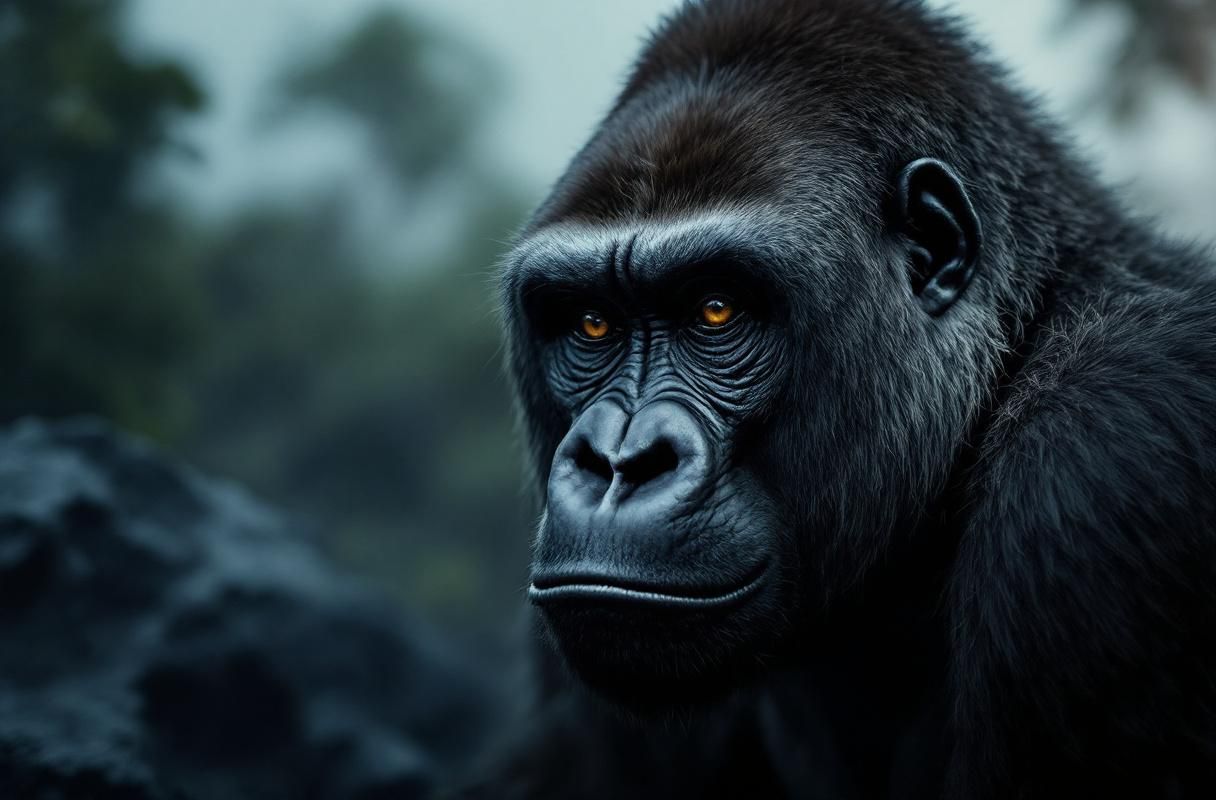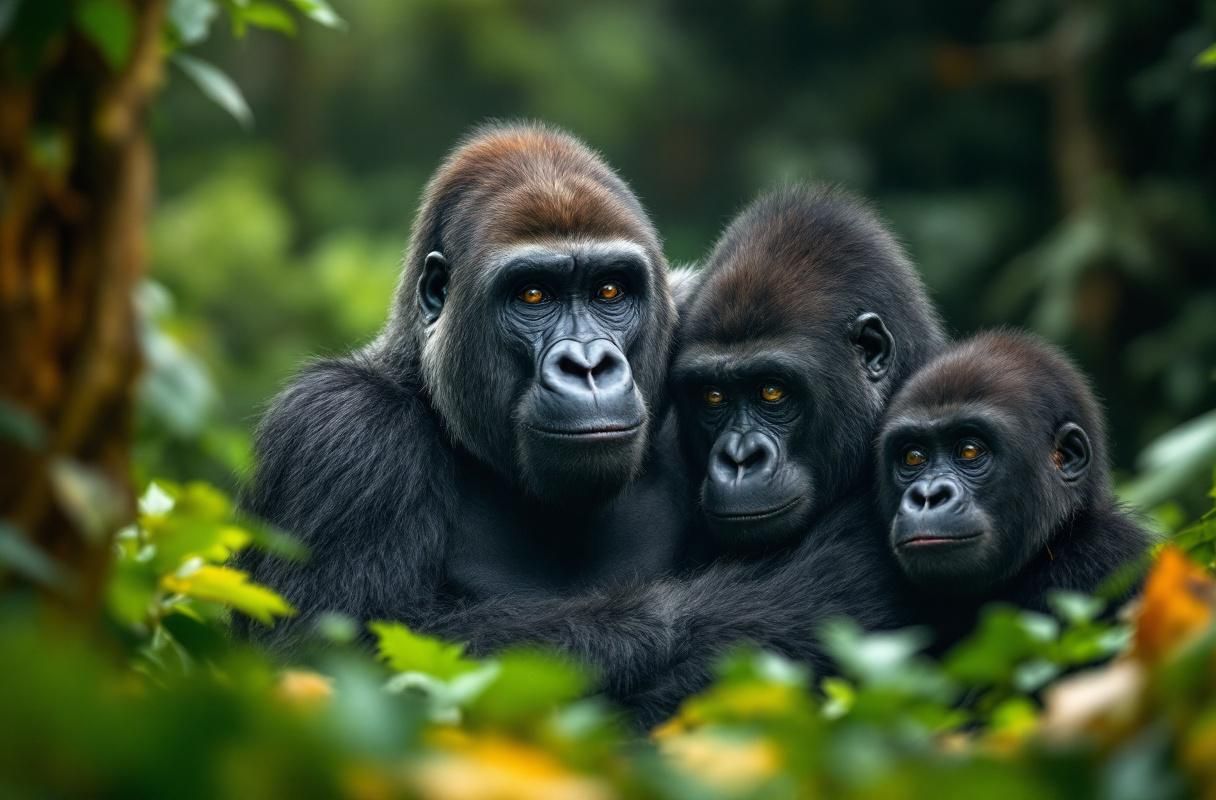
Gorillas are among the most fascinating and complex creatures on our planet. These magnificent apes not only captivate us with their sheer size and strength but also with their intricate social structures and behaviors. In this article, we will explore ten amazing facts about gorillas that highlight their importance to our ecosystem and the urgent need for conservation efforts. Whether you are an avid wildlife enthusiast or a casual observer, these insights will deepen your appreciation for these incredible animals.
Gorillas are classified as endangered species, facing threats from habitat loss, poaching, and disease. The International Union for Conservation of Nature (IUCN) lists all gorilla species as either endangered or critically endangered, making their conservation vital not only for their survival but also for the health of their ecosystems. Protecting gorillas goes beyond saving a species; it involves preserving the biodiversity of their habitats, which are rich in flora and fauna.

Conservation efforts have made strides in recent years, with organizations focusing on habitat preservation, anti-poaching initiatives, and community involvement. Successful examples include the establishment of protected areas like the Virunga National Park in the Democratic Republic of the Congo. This region has become a sanctuary for mountain gorillas, demonstrating the positive impact of combined conservation strategies. Engaging local communities in these efforts is crucial, as their livelihoods often depend on the health of the ecosystem.
Habitat Protection: Establishing protected areas is essential for maintaining gorilla habitats. Governments and NGOs are working together to create safe zones where gorillas can thrive without human interference.
Community Engagement: Involving local communities in conservation efforts ensures that they benefit economically from preserving wildlife. Eco-tourism initiatives provide jobs and promote awareness of the importance of gorillas.
Anti-Poaching Initiatives: Strengthening law enforcement and creating awareness campaigns help combat poaching. Training park rangers and increasing surveillance can significantly reduce threats to gorilla populations.
Gorillas are highly social animals, living in groups known as troops. These troops are usually led by a dominant male known as a silverback gorilla, who plays a crucial role in the group's dynamics. Understanding gorilla behavior provides valuable insights into their social structure and communication methods, which are remarkably sophisticated.

Gorilla troops can vary in size, typically consisting of several females, their offspring, and one or more silverbacks. The silverback is responsible for protecting the troop from external threats and making decisions regarding their movements. This hierarchical structure ensures stability within the group and allows for cooperative parenting, where females often share responsibilities for rearing young gorillas.
Gorillas communicate through a combination of vocalizations, body language, and facial expressions. Here are some common forms of communication:
Vocalizations: Gorillas use a range of sounds, including grunts, barks, and roars, to convey different messages. For example, a low grunt can indicate contentment, while a roar may signal aggression or a warning.
Body Language: Postures and movements are crucial in gorilla communication. A silverback may puff out his chest and stand tall to assert dominance or to display confidence in front of potential threats.
Facial Expressions: Gorillas express emotions through facial expressions. A relaxed gorilla may show a slight smile, while a frown or glare can indicate distress or aggression.
For wildlife enthusiasts, experiencing gorillas in their natural habitat is a once-in-a-lifetime opportunity. Here are five top locations for gorilla tours where you can observe these magnificent creatures up close.

Known for its stunning volcanic landscapes, Volcanoes National Park is home to the endangered mountain gorillas. Guided treks through the dense forest offer visitors a chance to encounter these gentle giants in their natural environment. The park has made significant strides in gorilla conservation, and the local community benefits greatly from eco-tourism.
Bwindi is renowned for its biodiversity and is one of the best places to see mountain gorillas. The park is a UNESCO World Heritage site and offers various trekking experiences, ranging from easy to challenging. Visitors can also enjoy the rich cultural heritage of the surrounding communities.
Virunga National Park is Africa's oldest national park and a critical habitat for mountain gorillas. Although it faces challenges due to political instability, the park offers guided tours that support conservation efforts. The lush landscape and diverse wildlife make it a unique destination for adventurers.
Ngamba Island is a sanctuary for orphaned and rescued chimpanzees and gorillas. While not a traditional gorilla trekking destination, visitors can learn about gorilla conservation efforts and observe these animals in a more controlled environment, making it ideal for families and educational trips.
This lesser-known park offers a unique experience to see western lowland gorillas. The pristine rainforest and diverse wildlife attract nature lovers, and the park's focus on conservation and community involvement provides a meaningful travel experience.
Gorillas are primarily herbivorous, with their diet consisting mainly of leaves, stems, fruit, and flowers. Understanding their dietary habits is essential for their health and well-being, especially in the context of habitat loss and environmental changes. For more on the diverse wildlife in Africa, you might be interested in safari animals you can see during your travels.
The diet of gorillas can vary based on their species and habitat. For instance, mountain gorillas primarily consume fibrous vegetation found in their mountainous habitats, while lowland gorillas may have a more varied diet that includes fruit. This difference in diet highlights the importance of preserving their natural habitats to ensure their access to nutritious food.
Fiber-Rich Foods: Gorillas require a high-fiber diet to support their digestive health. Consuming large quantities of leaves and stems helps them maintain a healthy gut.
Fruits and Flowers: While gorillas primarily eat vegetation, they also enjoy fruits and flowers when available. These provide essential vitamins and minerals that contribute to their overall health.
Water Intake: Gorillas need access to fresh water for hydration. They often obtain moisture from the plants they consume but will also drink from water sources when necessary.
The silverback gorilla is a symbol of strength and leadership within gorilla troops. These males are characterized by their distinctive silver hair on their backs, which develops as they mature. Understanding the role of the silverback is crucial for appreciating the social dynamics of gorillas.
Silverbacks are responsible for the safety and well-being of their troop. They display protective behaviors, such as charging at potential threats and leading the group to safer locations. Their presence is essential for maintaining the group's cohesion and stability.
Leadership: Silverbacks make critical decisions about the troop's movements and interactions with other groups. Their experience and strength command respect from other members.
Protection: The primary role of a silverback is to defend the troop against predators and rival gorillas. Their size and strength are formidable deterrents.
Breeding Rights: Silverbacks are typically the primary breeders within their troops. This role ensures the continuation of the troop's lineage and genetic diversity.
Gorillas are remarkable creatures that play a vital role in their ecosystems. From their complex social structures to their dietary needs, understanding these amazing animals is essential for promoting effective conservation efforts. By appreciating the importance of gorillas and the challenges they face, we can contribute to their protection and ensure that future generations can experience the wonder of these magnificent apes.
If you're inspired to learn more or support gorilla conservation efforts, consider participating in eco-tourism, donating to wildlife protection organizations, or advocating for policies that protect their habitats. Together, we can make a difference in the lives of gorillas and the ecosystems they inhabit.
Get free resources, early access to new features and updates.
No spam. Just fun educational emails!